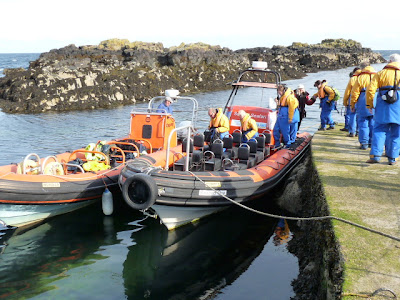The seal season is really kicking in here with numbers building up each day. The island is taking on the seal atmosphere will their wailings, grunts and snorts drifting across the island along with their rank, musky smell.
Yesterday 2 more pups were born on Rona, north of the North Horn, close to Whaups rest so closing off that part of the island until after Christmas. One of the pups had just been born when we got there and we watched it take its first feed of the high fat milk that it gets for the next 21 days before it is left to its own devices.
The other pup was born to a cow that seemed to be blind or at least partially sighted. Both her eyes are milky which suggests that she hasn't great eye sight but looking at the size of her she hasn't had any problems feeding. It just goes to show how the seals rely on their most impressive whiskers.
The males are starting to take-over the bays and gullies and one or two are venturing onto the beaches. You have to be a bit careful as seals are tucked away in all sorts of places.
This big old chap was having a nice kip on the east side of Rona when we unfortunately woke him up.
Watching the seals hauled out is always entertaining. The pull themselves into funny shapes so that the can keep their flippers out of the water for the longest time. The flippers and head have the least amount of blubber so can loose valuable body heat quickly the longer they lie under the water.
Sitting down at the North Horn watching all this going on was fabulous, made better and more autumnal by flocks of pink feet and barnacle geese coming in off the sea to spend their winter here in Scotland.
.JPG)
.JPG)
.JPG)

.JPG)
.JPG)
.JPG)
.JPG)
.JPG)
.JPG)
.JPG)


.JPG)
.JPG)
.JPG)
.JPG)
.JPG)
.JPG)
.JPG)

.JPG)
.JPG)
.JPG)
.JPG)
.JPG)
.JPG)
.JPG)
.jpg)
.jpg)
.jpg)
+(2).jpg)
.jpg)
.jpg)
.jpg)












.JPG)
.JPG)
.JPG)
.JPG)
.JPG)
.JPG)
.JPG)
.JPG)
.JPG)
.JPG)
.JPG)
.JPG)
.JPG)
.JPG)